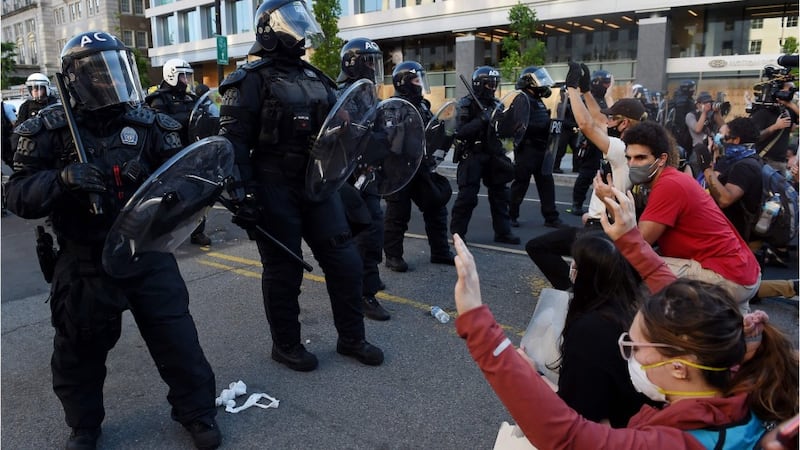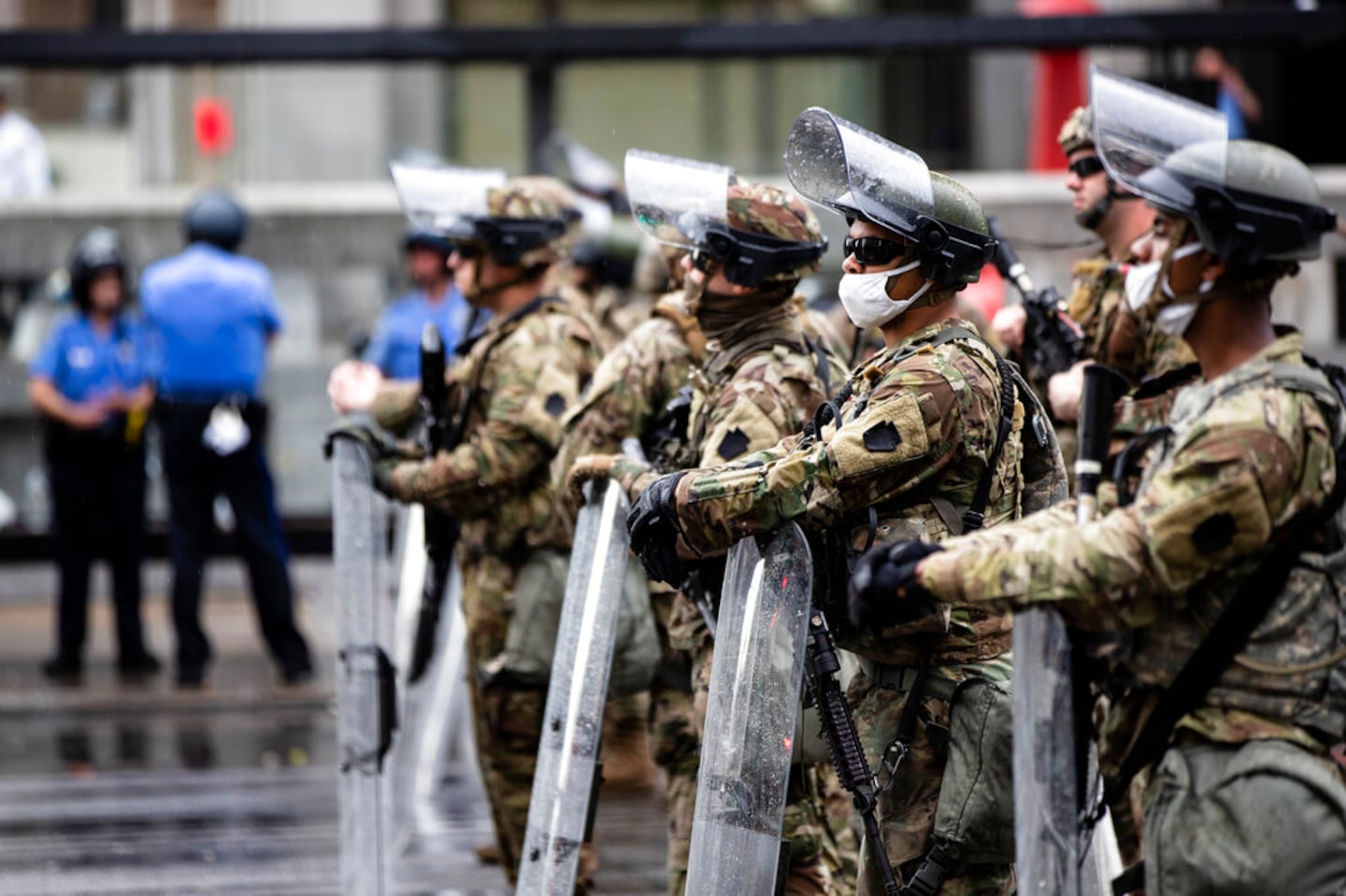The images of protesters meeting police in the streets of cities across the United States this past week have drawn a stark contrast for some watching the scene unfold on television.
Increasingly, mask-wearing protesters decrying the death of George Floyd at the hands of a Minneapolis police officer are being met by local or state police officers clad in protective body gear, some holding shields, others standing near what look like armored vehicles.
The protective gear and vehicles that many state and local agencies are bringing out as protests have grown larger are provided to them as part of an initiative called the 1033 Program, which is a system set up to pass on surplus military equipment for use by state-level law enforcement agencies.
Under a system that began some 30 years ago, state and local agencies are allowed to ask for everything from rifles to trucks to computers to help in their fight against criminal activity.
If the equipment is available and approved for the agency’s use, it’s theirs for the cost of shipping.
How does the 1033 program work? Here, from the Defense Logistics Agency is a look at the specifics.
When was the program created?
In the National Defense Authorization Act for Fiscal Years 1990 and 1991, Congress authorized the transfer of excess DOD supplies and equipment to both federal and state agencies for use in the war on drugs.
Under the 1997 National Defense Authorization Act Congress changed the rules to allow all law enforcement agencies to acquire property for “bona fide law enforcement purposes.” Preference is given to counter-drug and counter-terrorism requests, the legislation notes.
Who runs the program?
The Law Enforcement Support Office, which is at DLA Disposition Services Headquarters in Battle Creek, Michigan, oversees the program.
How do agencies participate in the program?
Each state must set up a business relationship with DLA through a Memorandum of Agreement.
Governors appoint a state coordinator who oversees the state program and deals with the DLA.
Who participates in the program?
More than 8,000 law enforcement agencies that have the powers of apprehension and arrest from all 50 states and all U.S. territories participate in the program. A law enforcement agency is a government agency whose primary function is the enforcement of applicable federal, state and local laws and whose compensated law enforcement officers have the powers of arrest and apprehension.
How does the program work?
Law enforcement agencies must be approved by the state coordinator and LESO to participate in the program. Once approved, representatives of the law enforcement agencies can visit their local DLA Disposition Services Site or see what is available on a website.
Once they look at the inventory of surplus items, they can place a request on the online site for certain pieces of equipment.
Agencies get the item once the equipment has been approved by both the state coordinator and LESO and has been shown to have a justification for use by the agency.
What is the cost?
The equipment is given to law enforcement agencies for the cost of transportation and/or shipping.
Who determines what material law enforcement agencies can have?
DLA makes that determination; however, it does not define how the equipment is to be used, licensing and transportation.
What type of equipment is available for law enforcement agencies?
Some examples of the equipment transferred include: 5.56 mm rifles, sleeping bags, 12-gauge shotgun, trucks, .45-caliber pistol, reconnaissance camera system, fixed-wing plane and a coffee maker.
How can I find out what my state law enforcement agencies have received?
You can search for a list of equipment that state and local agencies and U.S. territories have acquired from the Department of Defense since 1995 by clicking here.
Cox Media Group









